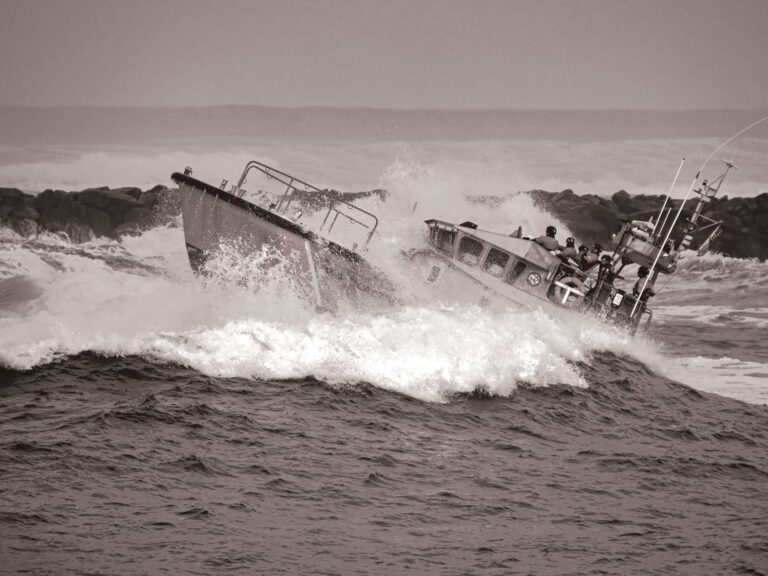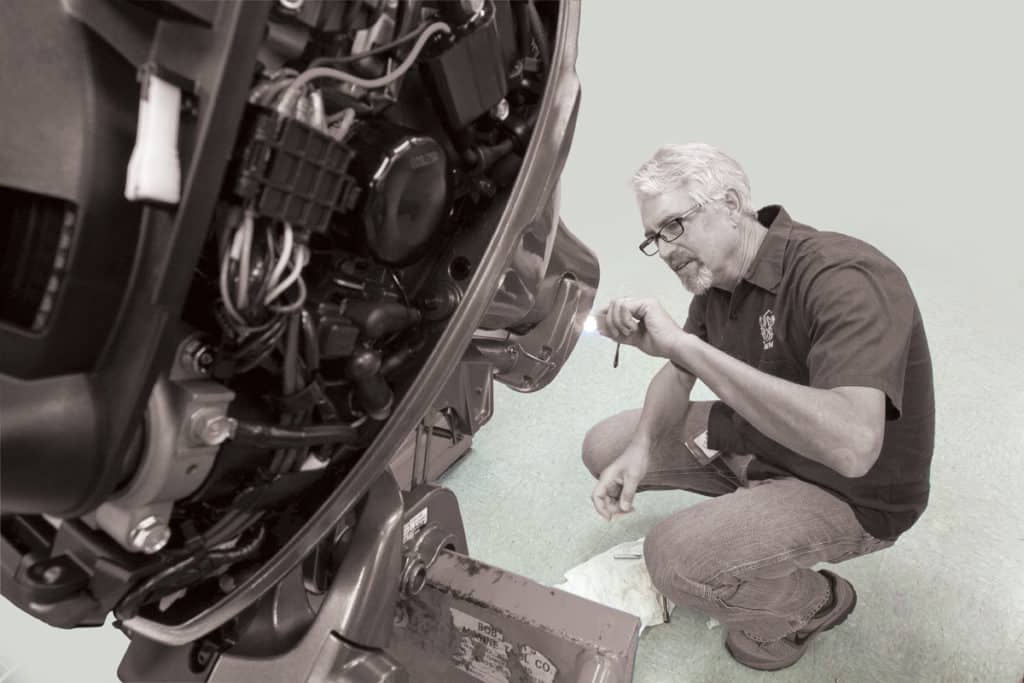
In my gearhead fantasy, I have an account with the Snap-On truck and a big, red stacker tool chest stocked with drop-forged wrenches and sockets. A shelf of assorted solvents and lubricants is in the corner, and my air hose dangles from an overhead reel. “Chuck” is embroidered on the front of my shop shirt, and sad boaters bring me disabled outboards. With my tools and know-how, I save their weekends or seasons, or maybe even their marriages.
In reality, I’m sitting in a classroom with 10 lucky people who have a chance to make my fantasy their careers. It’s the first hour of the fourth day of a two-week Yamaha Marine Service Skills Training session, and the instructor is discussing the use of a Fluke 78 multimeter, which was also covered in last night’s assigned reading. I notice that the instructor and I are the only people in the room wearing reading glasses, which is exactly the idea.
All the electronic advancements that we love about new outboards have also made them ever-more complex to service. The engine companies build diagnostic tools into the electronic control module (ECM), but to be a good modern service tech, you have to be good at understanding those. Think you can be? Help wanted.
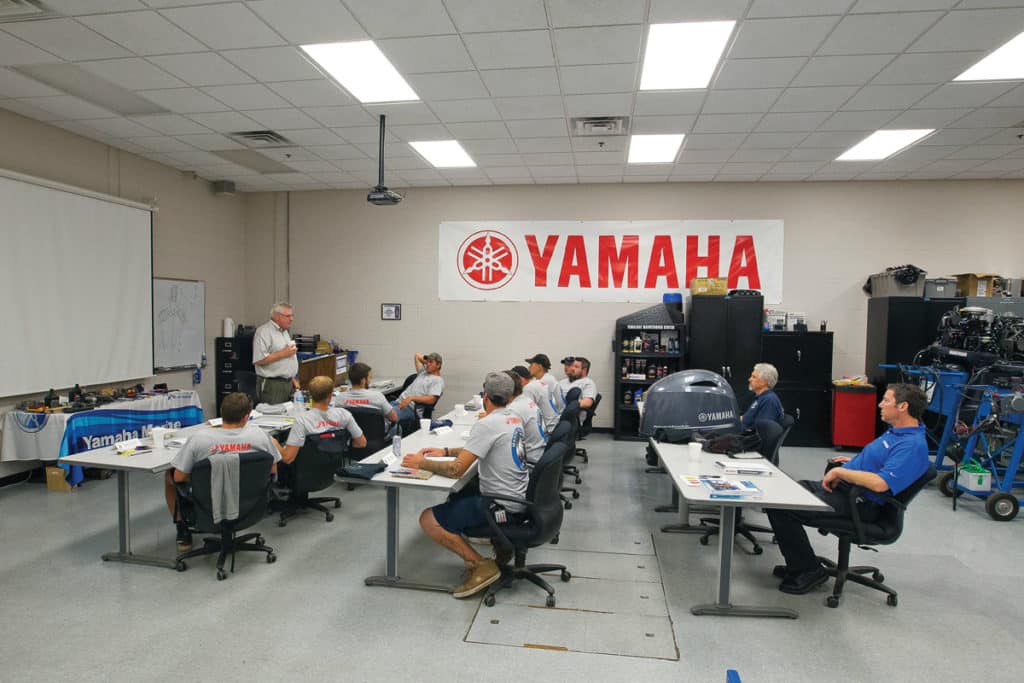
A Call to Arms
Service Skills Training (SST) is a new program developed by the Yamaha Marine Technical Training Group to address perhaps the most pressing issue facing marine retailers today: an acute shortage of qualified marine technicians. The idea is to introduce young employees from Yamaha marine dealerships to the very basic elements of outboard engine service. If the employee shows aptitude and ambition after completing the two-week course, he or she can move on in the Yamaha training sequence toward the ultimate goal of gaining Yamaha Master Technician certification. Yamaha ran a pilot SST session in 2015 and opened the full program in 2016. To date, the company has trained 99 technicians.
How bad is this shortage of techs? A 2016 workforce assessment survey conducted by the Marine Retailers Association of America, which generated 530 responses representing 1,300 retail locations, revealed that 21 percent of budgeted payroll positions remain unfilled and 59 percent of the unfilled positions can be found in the service department. The survey suggests that given current projected growth, marine retailers could be short nearly 31,000 employees by 2019, and 18,290 of those vacancies could be related to service.
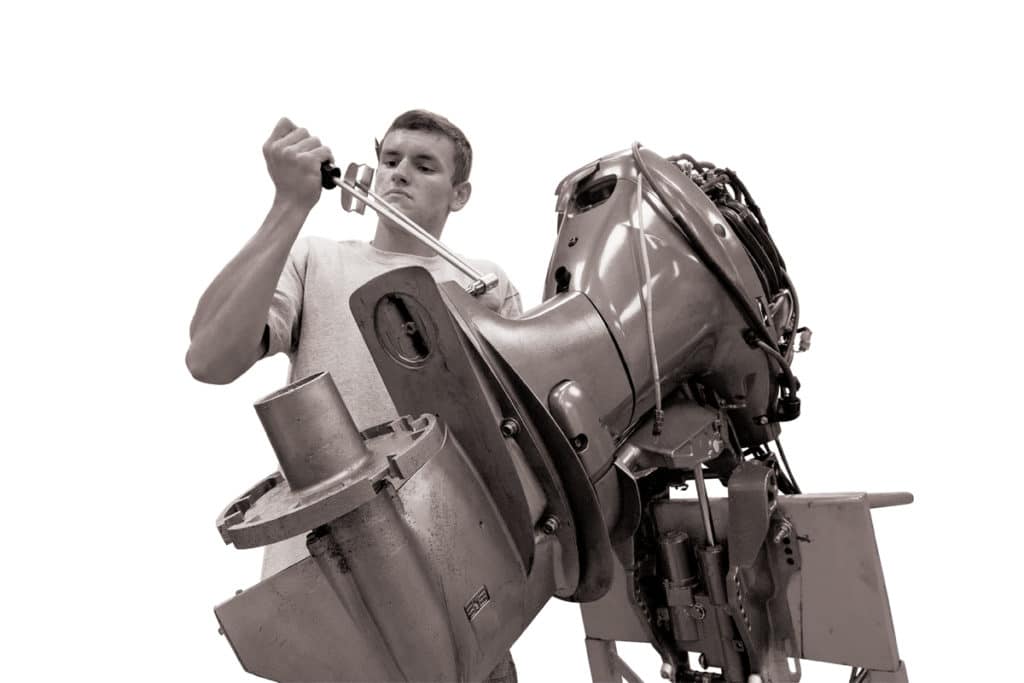
“Workplace vacancies are at a crisis level,” MRAA President Matt Gruhn says. “I recently hosted a meeting of nine marine retailers from the Minneapolis area, and we discovered that five of the dealers were bidding to hire the same technician.”
With its new SST program, Yamaha is encouraging dealers to “grow their own” technicians. To use a sports analogy, dealers need to stop relying on the free-agent market for techs and start developing their own draft picks.
Here’s a great example. At the Yamaha session, I met 22-year-old Brad Starr, who was sponsored by Striper Marina in Barrington, Rhode Island. Starr started working at the dealership when he was 15, “washing and waxing boats and other grunt work.” He has proven he can be reliable and wants to advance in the business, so now he’s getting entry-level training to work on Yamaha motors. He’ll return with enough skill to be a bigger part of the revenue stream at the dealership.
Yamaha dealers pay the cost of the SST course and cover travel and expenses while the student is at the Yamaha training facility in Kennesaw, Georgia. The total expense averages $5,000, according to Yamaha. Completing the online Introduction to Outboard Systems Training module is a prerequisite. There are 10 students in each class. Our instructor, Wayne Riddell, has 30 years of Yamaha service experience and the stories to match, which he tells with casual profanity.
“A good service-tech candidate will be inquisitive and a good employee,” Riddell says. “I want these guys and gals to have at least a year in at the dealership, just to prove they will show up every day. In my opinion, a year at a dealership with a good mentor is worth five years at a formal training school.”
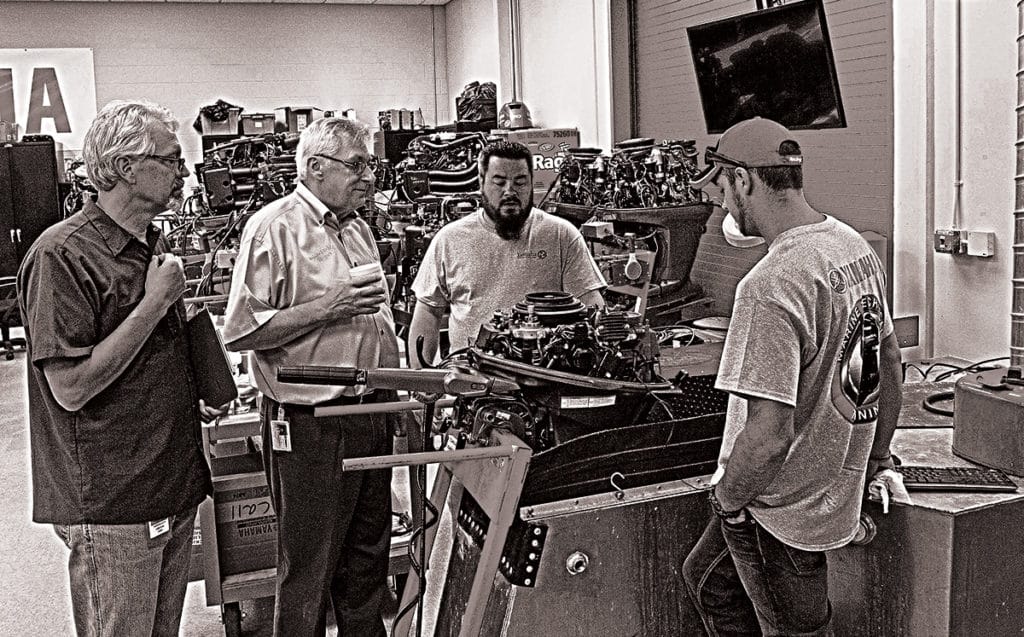
School’s in Session
I consider myself to be inquisitive and, unless you’re looking for traces of Pabst Blue Ribbon, I can pass the drug test. Could I hack it as a marine tech? The program starts with the absolute basics — how to identify Yamaha engine models, special service tools, and the use of a multimeter, micrometer and torque wrench. We cover how to gap and read spark plugs and how to check engine oil level. After a classroom review of the previous night’s reading lesson and the grading of a quiz, it’s break time. Just like in the shop back home, the lab features a pot of nasty coffee and foam cups. Next, we move over to the lab area equipped with Yamaha F8, F20 and F60 outboards, tools and test tanks. Working in pairs, we go through a lab exercise under the critical eye of Riddell.
I chose to team up with the oldest student, 35-year-old Jeb Slawick from Mayberry Sales & Service in Port Murry, New Jersey, who has a graying buzz cut and biker chin whiskers. Unlike most of the younger, Red Bull-swilling students, Slawick has a decent tech resume. He has an associate degree and has been a certified Chrysler auto tech, and he was hired on at Mayberry Sales mostly to work on commercial landscaping equipment, on which he’s also been trained. The dealership also sells G3 boats and Yamaha outboards, and when its only Yamaha tech quit, Slawick started working on outboards. He’s here to start moving up the formal Yamaha training ladder, and I knew right away this was not his first rodeo. During our oil-changing lab, Slawick noted that the threads on the drain plug were rough.
“This has been cross-threaded at some point,” he said to Riddell. “We could get a new plug and tap the threads.”
I could accomplish the oil change, but I’m not sure I would have noticed those threads — or bothered to check them. That’s experience.
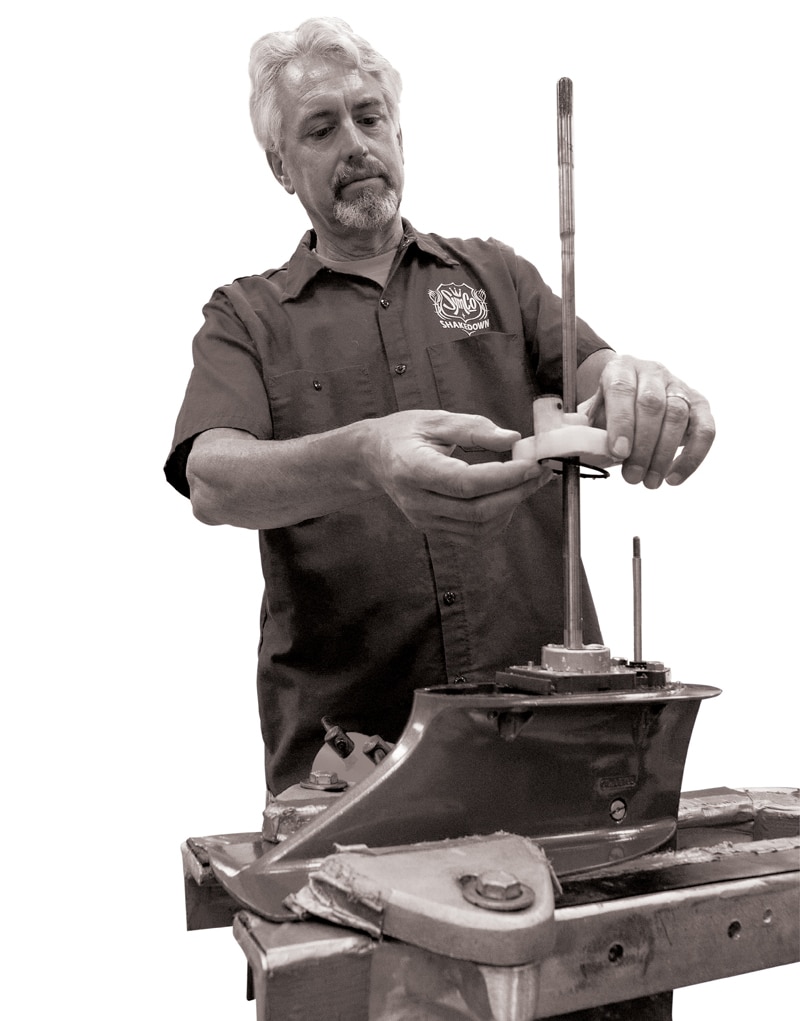
In other labs, we changed gear-case lube and pressure-tested the case, checked valve clearance, changed the fuel filter, checked power-trim fluid level, set the float level in a carburetor, and changed a water-pump impeller. I own feeler gauges and a torque wrench and have worked on enough engines and vehicles in the past to know how to follow the instructions in a manual. I have more experience than the younger students, but not as much as Slawick. After each lab, our motor would go into the tank for a test run. A common rookie mistake was crossing plug wires.
A student who can master the tasks presented in this course would be able to complete a 100-hour service check, or a typical winterization, on any Yamaha four-stroke outboard. But the course also entices the students with a glimpse of the skills they could gain if they come back for advanced training, with a focus on mastering electronic diagnostics. The proprietary Yamaha Diagnostic Information System (YDIS) is the essential tool on a Yamaha outboard tech’s bench, and it does not come on the Snap-On truck. The younger students all seemed to be somewhat familiar with YDIS from seeing it used at their home dealerships. They may not know how to tune a carburetor, but they are not intimidated by computers.
On my second day in class, Riddell gave a tutorial on how to download YDIS software updates from a server in Japan. Then he went through some of the basic diagnostic programs with setup tips: how to select metric or standard units and how to delete old trouble codes. Things started getting a little fuzzy for me.
Riddell held up a small black box he called a “pukka pukka” that’s used to generate a signal to test the wiring harness and engine control unit (ECU).
“Do you guys know about shotgun repairs?” Riddell asked. “On these modern motors, any issue is likely to be a sensor, the wiring harness or the computer. A dealer that doesn’t know how to use YDIS to trouble-shoot shotguns the motor. They just replace all three. I hate shotgun repairs.”
Someone will always need to change the oil, but gathering and interpreting diagnostic data is the real skill of the future technician.
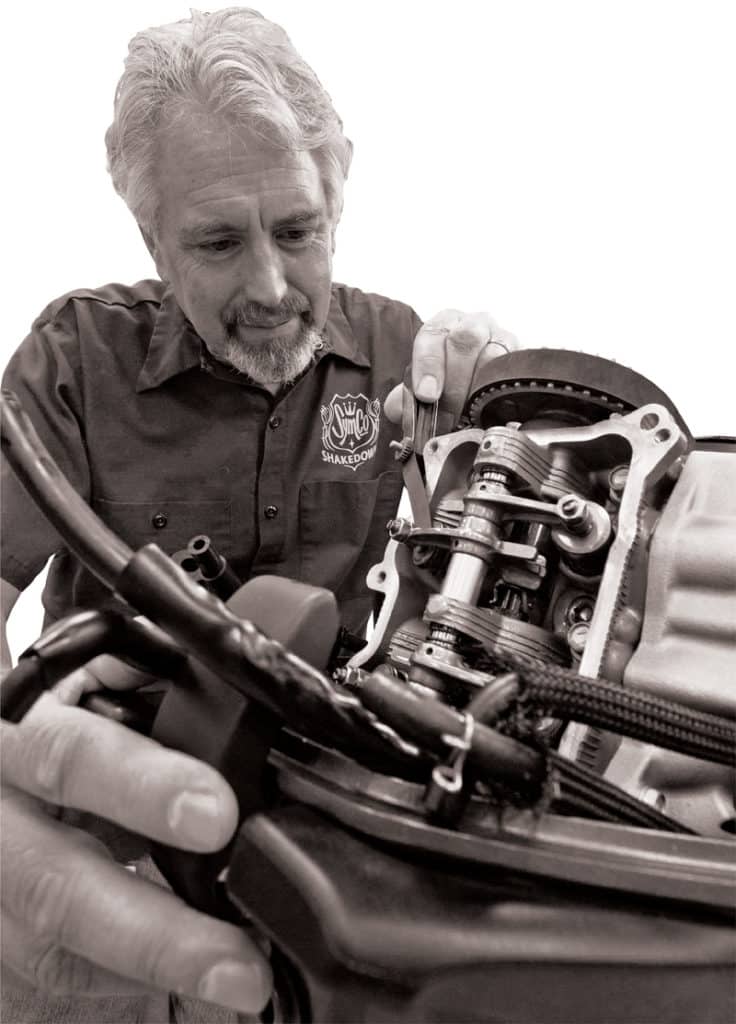
“In the years I’ve been at this, the rise of electronic diagnostic tools has been the biggest change,” Riddell tells me. “And the past two years have been the biggest leap, even more than the past decade.”
And you need to learn it twice to work on another outboard brand.
“Going from Yamaha to Mercury or Evinrude is like speaking a different language,” one student tells me. “I wouldn’t even know where to start on a Mercury.”
Riddell also displays the new YDIS Smart device, which plugs into the engine diagnostic K port and sends engine-operating data via Bluetooth to a technician’s laptop or tablet. Each of these devices costs $320. The students seem to be really excited about adding YDIS Smart to their YDIS kits back home. The basic kit costs $1,000. A weeklong program devoted just to YDIS is one of the 11 training modules offered at the Kennesaw facility and is a critical step on the ladder to Master Technician certification.
I really enjoyed attending this class because I have always loved tinkering with engines and get real satisfaction out of solving mechanical problems. Time spent in my home shop is real therapy. Right now, there’s a great career opportunity through a program like the Yamaha SST class for anyone who enjoys wrenching and boats. But a successful tech is going to need to embrace electronic tools as well as drop-forged wrenches. You might still get a name patch on your shirt.







